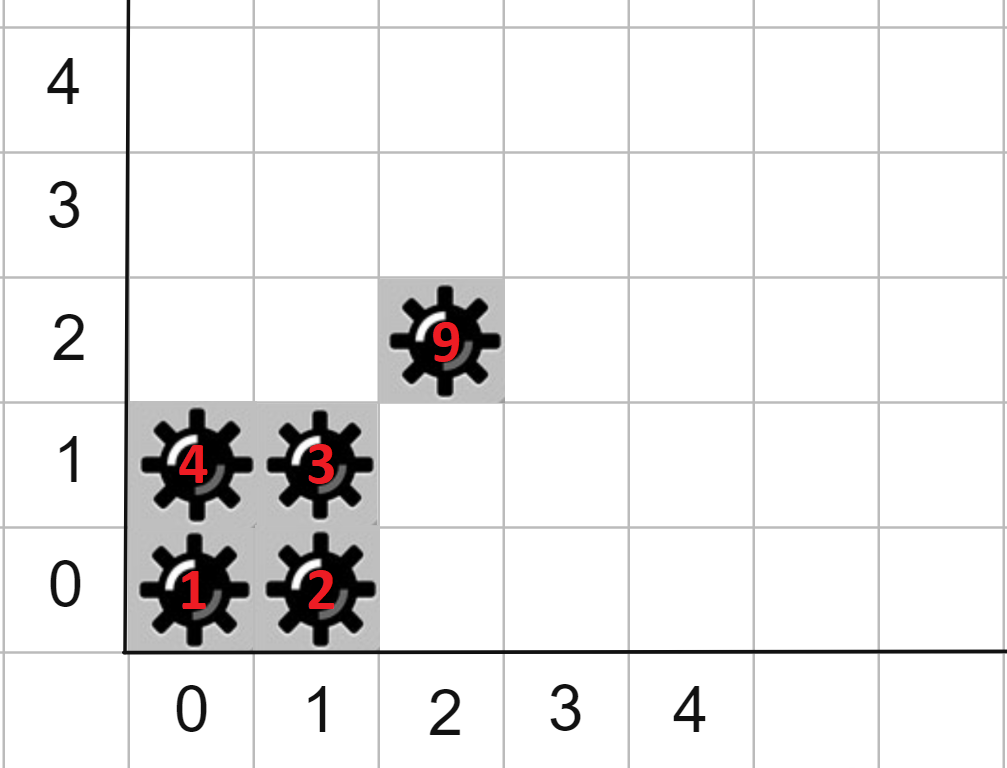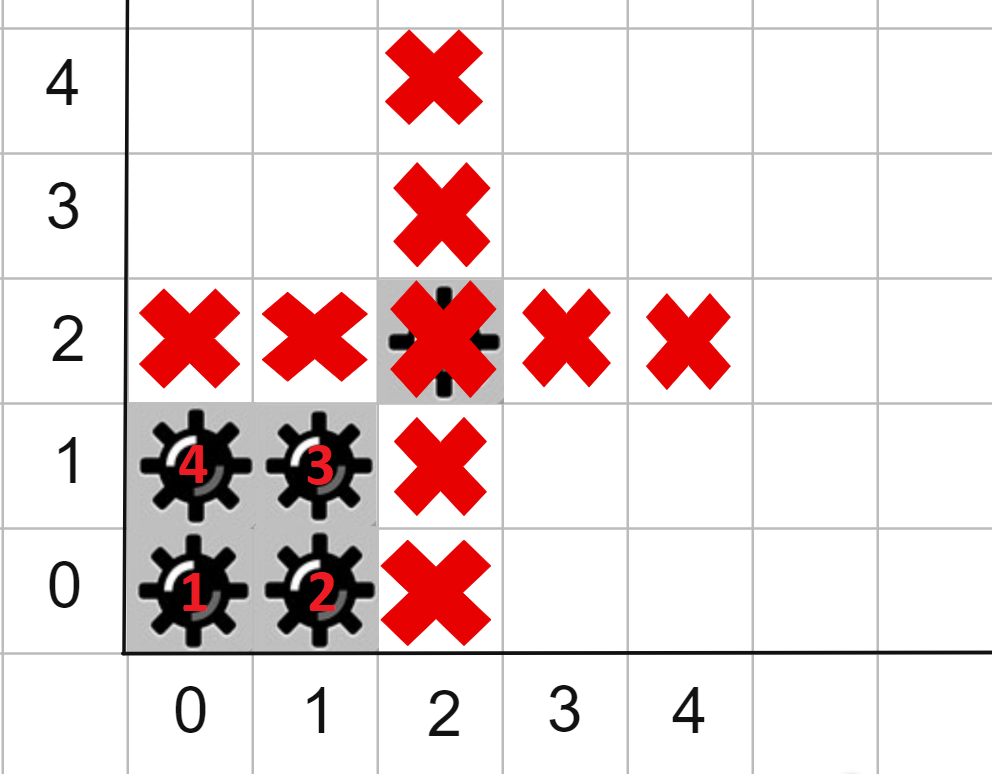| Codeforces Round 762 (Div. 3) |
|---|
| Finished |
Polycarp is very fond of playing the game Minesweeper. Recently he found a similar game and there are such rules.
There are mines on the field, for each the coordinates of its location are known ($$$x_i, y_i$$$). Each mine has a lifetime in seconds, after which it will explode. After the explosion, the mine also detonates all mines vertically and horizontally at a distance of $$$k$$$ (two perpendicular lines). As a result, we get an explosion on the field in the form of a "plus" symbol ('+'). Thus, one explosion can cause new explosions, and so on.
Also, Polycarp can detonate anyone mine every second, starting from zero seconds. After that, a chain reaction of explosions also takes place. Mines explode instantly and also instantly detonate other mines according to the rules described above.
Polycarp wants to set a new record and asks you to help him calculate in what minimum number of seconds all mines can be detonated.
The first line of the input contains an integer $$$t$$$ ($$$1 \le t \le 10^4$$$) — the number of test cases in the test.
An empty line is written in front of each test suite.
Next comes a line that contains integers $$$n$$$ and $$$k$$$ ($$$1 \le n \le 2 \cdot 10^5$$$, $$$0 \le k \le 10^9$$$) — the number of mines and the distance that hit by mines during the explosion, respectively.
Then $$$n$$$ lines follow, the $$$i$$$-th of which describes the $$$x$$$ and $$$y$$$ coordinates of the $$$i$$$-th mine and the time until its explosion ($$$-10^9 \le x, y \le 10^9$$$, $$$0 \le timer \le 10^9$$$). It is guaranteed that all mines have different coordinates.
It is guaranteed that the sum of the values $$$n$$$ over all test cases in the test does not exceed $$$2 \cdot 10^5$$$.
Print $$$t$$$ lines, each of the lines must contain the answer to the corresponding set of input data — the minimum number of seconds it takes to explode all the mines.
3 5 0 0 0 1 0 1 4 1 0 2 1 1 3 2 2 9 5 2 0 0 1 0 1 4 1 0 2 1 1 3 2 2 9 6 1 1 -1 3 0 -1 9 0 1 7 -1 0 1 -1 1 9 -1 -1 7
2 1 0
 Picture from examples
Picture from examples First example:
- $$$0$$$ second: we explode a mine at the cell $$$(2, 2)$$$, it does not detonate any other mine since $$$k=0$$$.
- $$$1$$$ second: we explode the mine at the cell $$$(0, 1)$$$, and the mine at the cell $$$(0, 0)$$$ explodes itself.
- $$$2$$$ second: we explode the mine at the cell $$$(1, 1)$$$, and the mine at the cell $$$(1, 0)$$$ explodes itself.
Second example:
- $$$0$$$ second: we explode a mine at the cell $$$(2, 2)$$$ we get:

- $$$1$$$ second: the mine at coordinate $$$(0, 0)$$$ explodes and since $$$k=2$$$ the explosion detonates mines at the cells $$$(0, 1)$$$ and $$$(1, 0)$$$, and their explosions detonate the mine at the cell $$$(1, 1)$$$ and there are no mines left on the field.
| Name |
|---|




